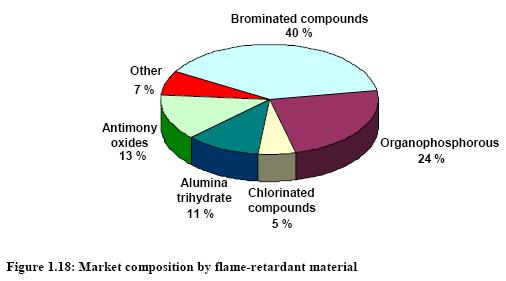Flame-retardants
Back to Information about flame-retardants
Flame retarded materials are modified or treated to be more resistant to ignition than non-flame retarded materials, or to have slower rates of flame spread in a major fire that is initiated by some other source; however, the flame retarded article will still ultimately burn. Organic flame-retardants are often brominated compounds. The HBr from their decomposition is very effective in deactivating free radicals in the vapour phase. The formation of new radicals is also reduced as less heat is generated, and the entire combustion process is slowed. Chlorinated compounds function in the same manner. In practice, often twice as much compound containing chlorine is required as compound containing bromine. The difference approaches the atomic mass ratio for the two halogens, i.e. 79.90: 35.45 = 2.25. Figure 1.16 gives some examples.
In 2001, the market value of brominated flame-retardant compounds was EUR 864 million (USD 774 million), related to a worldwide consumption of 774000 tonnes. Figure 1.17 and Figure 1.18 show the world market share and the market composition, respectively.
Literature: BAT for the Manufacture of Organic Fine Chemicals, August 2006


